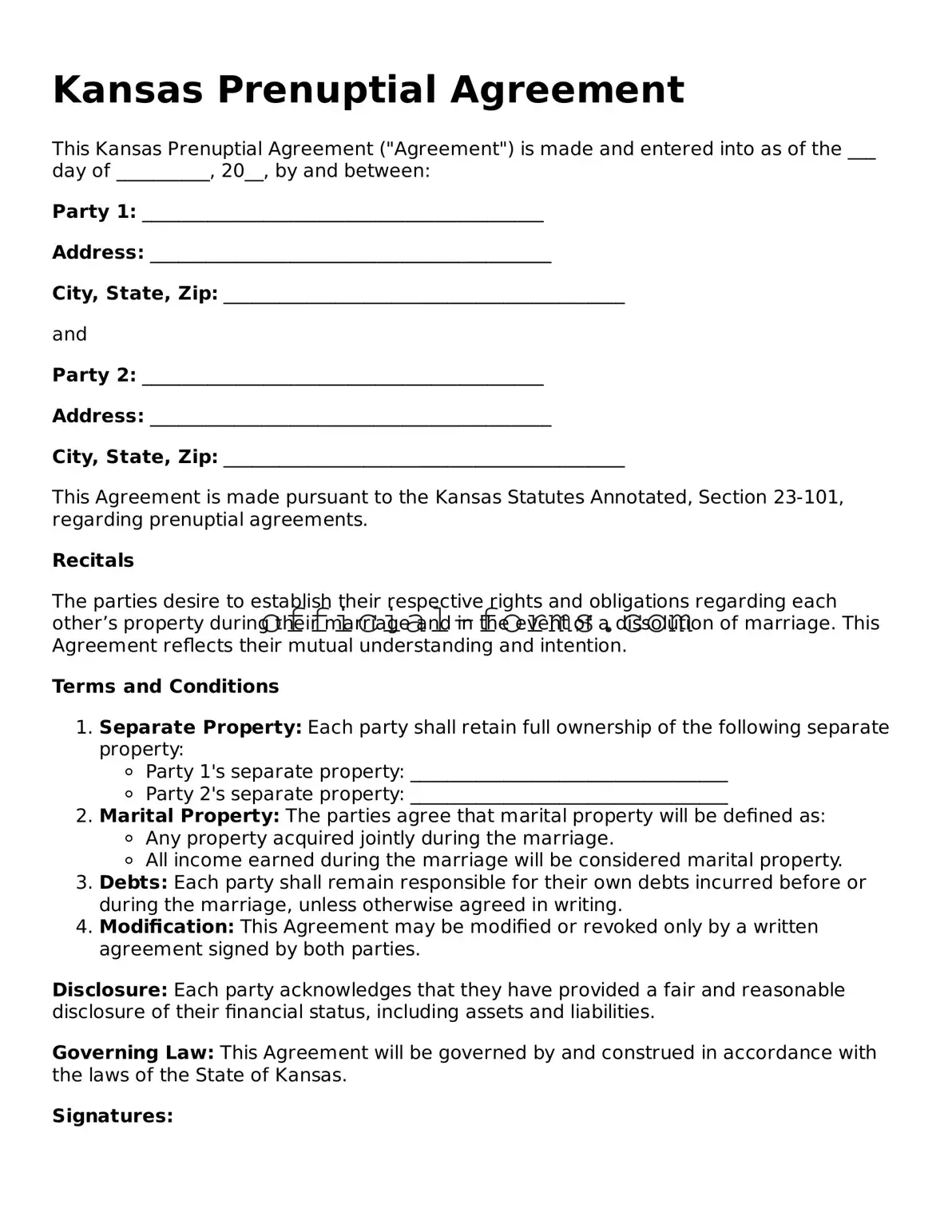Official Kansas Prenuptial Agreement Document
A Kansas Prenuptial Agreement form is a legal document designed to outline the financial and personal arrangements between two individuals before they enter into marriage. This agreement can help clarify each party's rights and responsibilities, ensuring a smoother transition in case of divorce or separation. By establishing clear terms, couples can protect their assets and reduce potential conflicts in the future.
Open My Prenuptial Agreement Now
